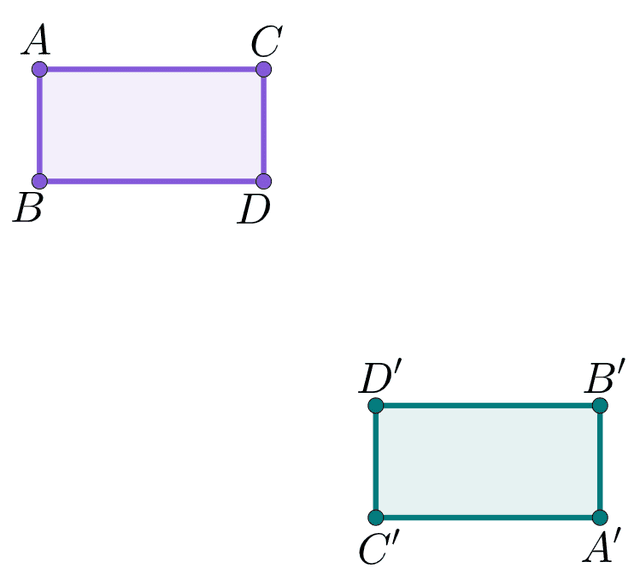Myths about teaching can hold you back
- Year 9
Rotational symmetry
I can recognise rotational symmetry in shapes.
These resources will be removed by end of Summer Term 2025.
Switch to our new teaching resources now - designed by teachers and leading subject experts, and tested in classrooms.
These resources were created for remote use during the pandemic and are not designed for classroom teaching.
Lesson details
Key learning points
- Congruent shapes can be used to investigate rotational symmetry.
- The centre of rotation is the centre of the shape.
- You must be careful not to count the starting point twice.
Keywords
Rotational symmetry - Rotational symmetry describes when a shape appears the same after some rotation. The order of rotational symmetry is the number of times the image appears the same as the object in one full turn.
Common misconception
When rotating a shape to count its order of rotational symmetry, pupils may count the starting position twice: once at the start and then again at the end of the full turn.
Encourage pupils to be consistent with when they count the starting position, either always counting it before they begin rotating the shape or always counting it at the end of the full turn.
To help you plan your year 9 maths lesson on: Rotational symmetry, download all teaching resources for free and adapt to suit your pupils' needs...
To help you plan your year 9 maths lesson on: Rotational symmetry, download all teaching resources for free and adapt to suit your pupils' needs.
The starter quiz will activate and check your pupils' prior knowledge, with versions available both with and without answers in PDF format.
We use learning cycles to break down learning into key concepts or ideas linked to the learning outcome. Each learning cycle features explanations with checks for understanding and practice tasks with feedback. All of this is found in our slide decks, ready for you to download and edit. The practice tasks are also available as printable worksheets and some lessons have additional materials with extra material you might need for teaching the lesson.
The assessment exit quiz will test your pupils' understanding of the key learning points.
Our video is a tool for planning, showing how other teachers might teach the lesson, offering helpful tips, modelled explanations and inspiration for your own delivery in the classroom. Plus, you can set it as homework or revision for pupils and keep their learning on track by sharing an online pupil version of this lesson.
Explore more key stage 3 maths lessons from the Geometrical properties: similarity and Pythagoras' theorem unit, dive into the full secondary maths curriculum, or learn more about lesson planning.

Licence
Prior knowledge starter quiz
6 Questions
Q1.The transformation that turns an an object around a fixed point is called .
Q2.The is the fixed point about which an object is rotated.
Q3.There are exactly five equal sized angle around a point. Each angle is °.
Q4.Which quadrilateral is always regular?
Q5.The arrow on the left can be rotated ° clockwise to create the arrow on the right.

Q6.The rectangle ACDB is rotated to give rectangle D'B'A'C'. The angle of rotation is °.

Assessment exit quiz
6 Questions
Q1.Rotational describes when a shape appears the same after some rotation.
Q2.An equilateral triangle has rotational symmetry of order .
Q3.A scalene triangle has rotational symmetry of order .
Q4.Which of these quadrilaterals always has rotational symmetry of order 4?
Q5.The wheel in this picture has rotational symmetry of order .



